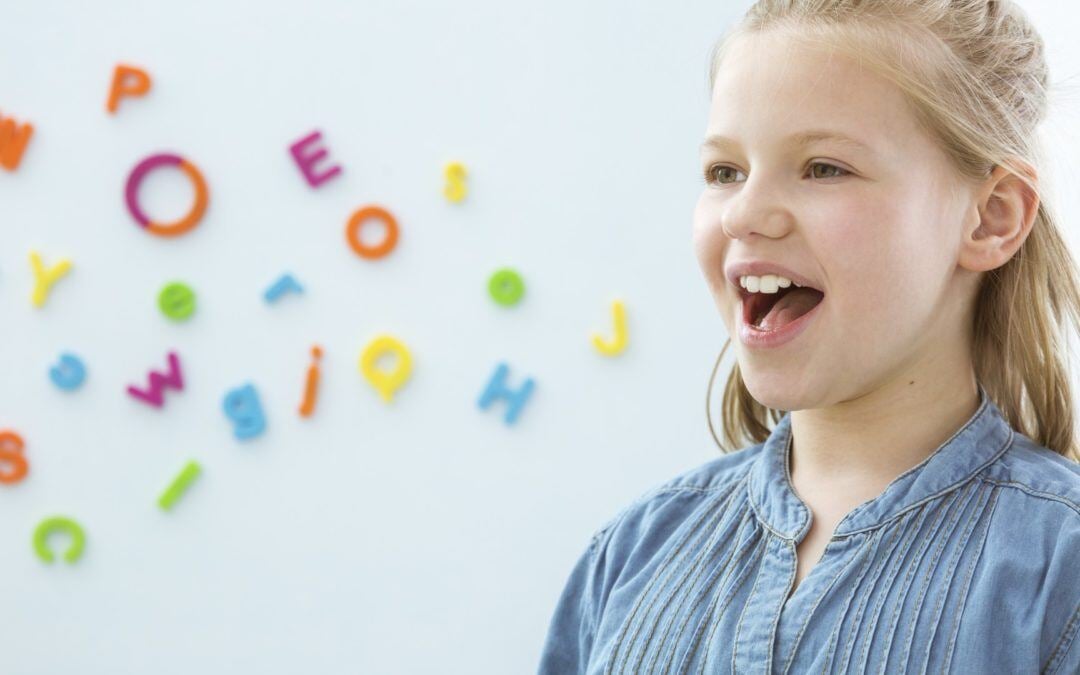Speech is the primary form of communication by which we are able to share our thoughts and feelings. Any difficulties with speech can cause frustration and hinder personal development.
Unfortunately, this is the reality for nearly 1 in 12 children, according to the National Institute on Deafness and Other Communication Disorders. The percentage of the population struggling with speech and language disorders only grows when you consider adults as well.
At SLP-tele, our online speech therapists believe that educating the families we work with is important to developing a successful speech therapy program for their child. For this reason, we would like to share information about the some of the most common speech disorders that can affect children and adults alike. By knowing how these conditions can affect your loved one, you can better support the efforts of their online speech therapist from SLP-tele.
Common Speech and Language Disorders
Stuttering
This common speech disorder affects around 3 million people in America. Repeating sounds and words is one of the most noticeable signs of stuttering. People who struggle with this will also have interrupted speech.
Stuttering can be broken into two specific types: developmental and neurogenic.
- Developmental – This is typically seen at a young age, and is often the result of children’s speech not developing in an optimal manner. The good news is that it can be successfully adjusted with online speech therapy, with the majority of children able to correct their stuttering disorder.
- Neurogenic – This condition stems from serious injuries to a person’s brain. Events like concussions and strokes can bring about a problem with stuttering in their aftermath.
Apraxia of Speech (AOS)
Apraxia of Speech (AOS) is characterized primarily by a person being incapable of saying what it is they want to say. The primary causes of AOS are brain damage or some type of damage to the neural pathways in the brain.
A child who has this condition will be able to think of the words that want to say, understand someone else’s, and even be able to write, but will not be able to speak clearly themselves. The extent to which they are affected varies, as some sufferers can still speak well enough to be understood by others, while for others, speech remains incomprehensible.
In Childhood Apraxia of Speech, the development of the neural pathways for speech does not follow a “normal” pattern. This can result in a number of problems in childhood, such as a kid learning how to talk later than those their age and struggling with pronouncing words correctly.
While the condition can be caused by genetic neurological factors in both adults and children, a traumatic brain injury can also be responsible for this disorder manifesting in a person’s speech.
Lisping
Like stuttering, lisping is a speech condition that most people have seen or are acquainted with. The first thought most people likely have when they think of a lisp is someone making a “th” sound in place of an “s” sound.
This is just one of the four types of lisps, however, which are listed below:
- Interdental – This is the type of lisp most commonly thought of and is characterized by the tongue going between the front teeth, causing the “th” sound in place of s and z sounds.
- Dentalized – This lisp can be identified by someone having their tongue hit their teeth while making s and z sounds.
- Palatal – This lisp occurs when the tongue hits the soft palate when making s and z sounds.
- Lateral – Air escaping out of the sides of the mouth cause this type of lisping.
This condition is something that you are most likely to see in childhood, but it can at times continue as a person becomes an adult. However, the outlook for it is positive.
As a functional speech disorder, lisping is something that can be changed or corrected through work with a Speech Language Pathologist. The therapy would focus primarily on pronunciation and annunciation while including muscle strengthening exercises to help adjust a person’s lisp.
Autism and its Relation to Speech Disorders
Autism Spectrum Disorder, through the efforts of numerous organizations and groups, has found a permanent place in the public consciousness. The awareness of this widespread disorder, affecting 1 in every 100 individuals, is important in light of autism’s connection to speech conditions.
While not every child or adult with autism also struggles with speech, communication issues can arise. Speech therapy is very helpful in overcoming problems with speaking. A qualified speech therapist can work with a child with autism to help them learn words and their meaning, be more comfortable in social situations, and learn important communication cues.
Speech therapy is not just for the child with autism either, family and those closest to them are encouraged to be a part of the sessions as well. This can relax the child, in turn, helping them learn much easier. It also gives parents and other family members the opportunity to learn about their program and how they can be a part of it.
SLP-tele is here for all your online speech therapy needs. We are ready to help improve your child’s life and communication skills.
For as common as speech disorders are, many of us are still surprised when we encounter them in everyday life. These conditions deserve our full attention as the strain they place on your child’s ability to communicate can affect other areas of their life, such as their self-esteem and relationships.
If you are concerned that your child may be suffering from a speech disorder, do not hesitate to contact SLP-tele today at 877-757-8353. Our experienced and caring team of online speech-language therapists can discuss a personalized plan to help your child unlock their full potential.
Start A Conversation
Whether you’re a physician, physician assistant, therapist, dentist, nurse practitioner, parent, patient, or health plan representative, we’re here for you.




